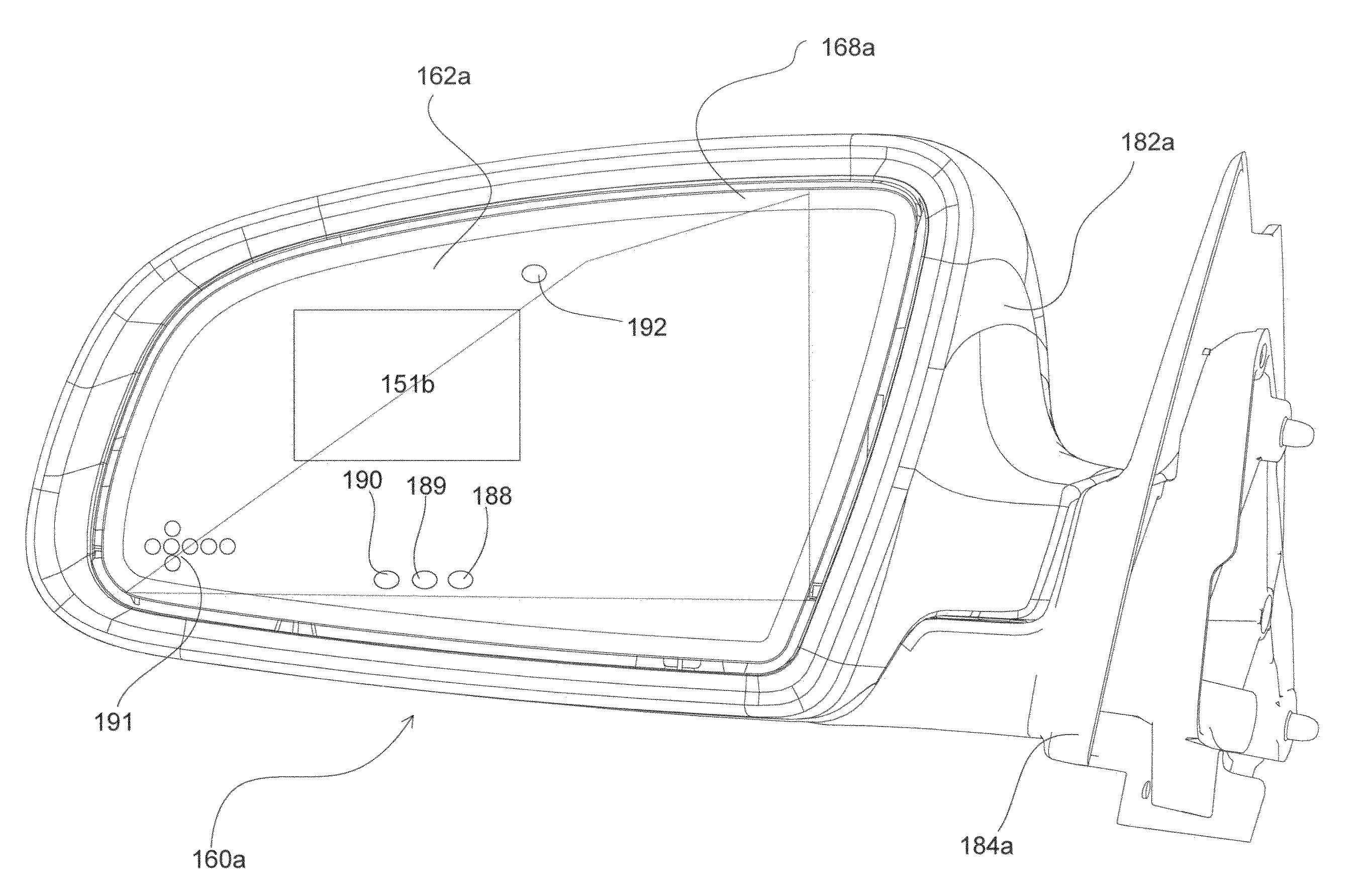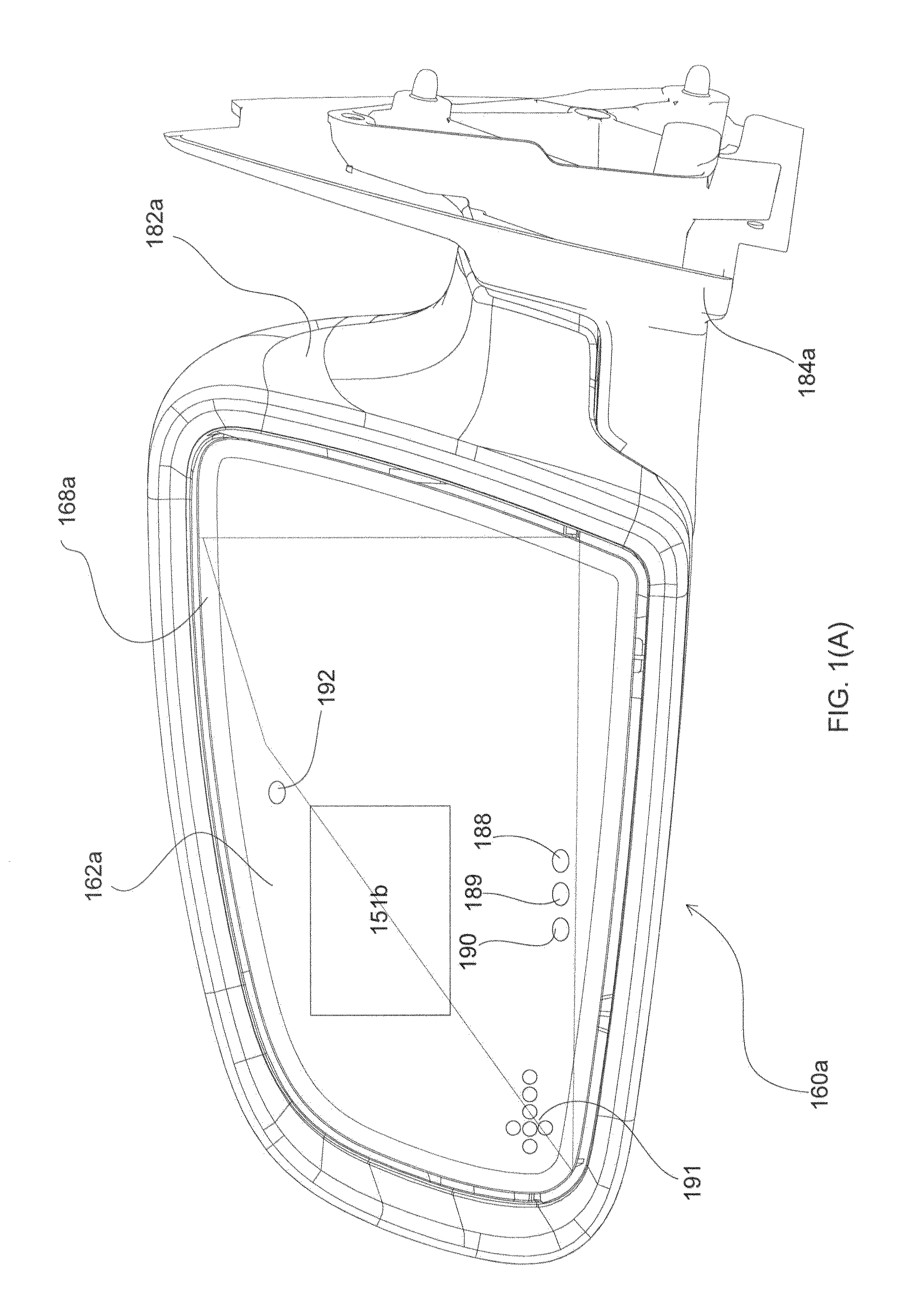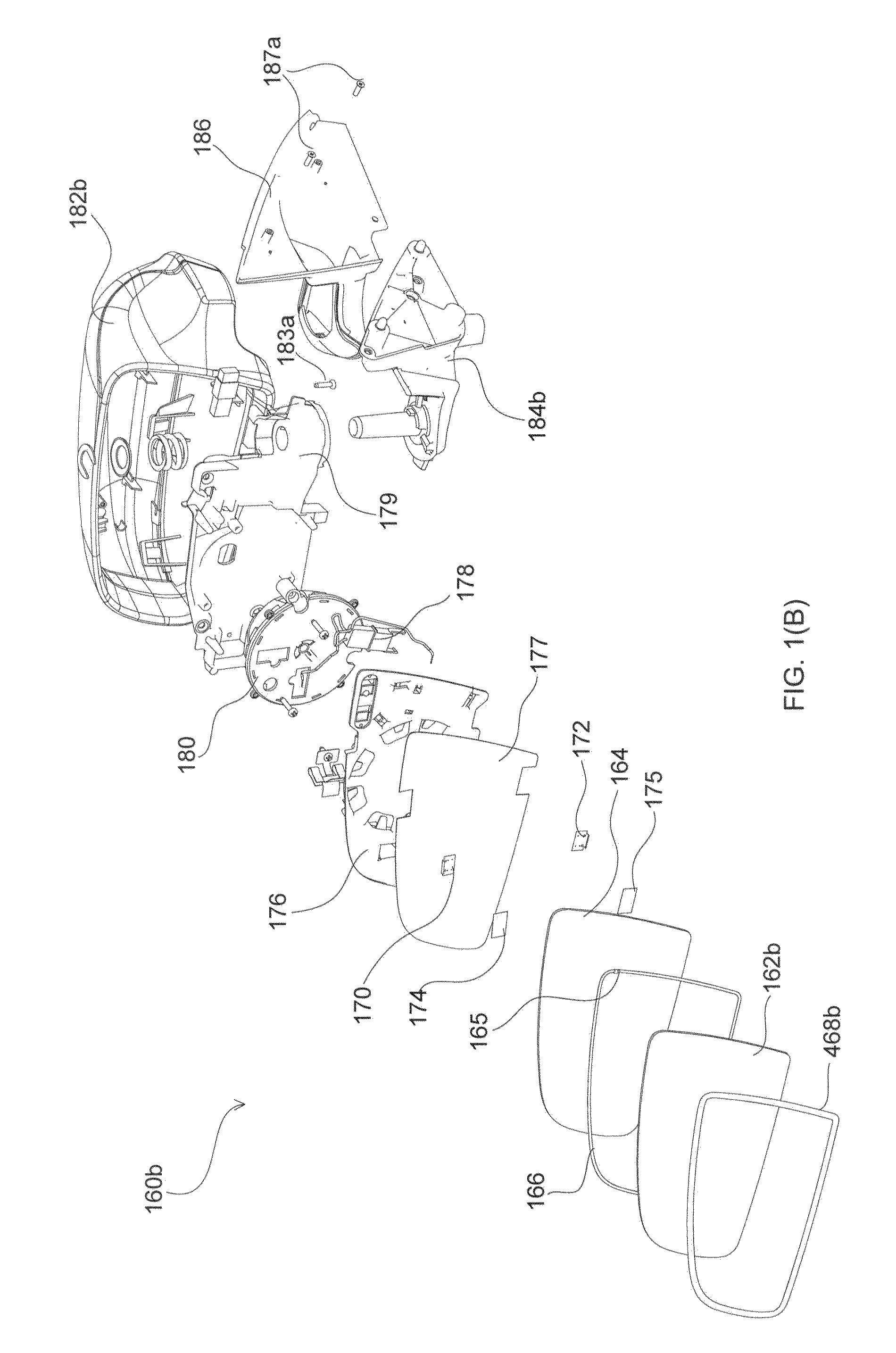Heaters for Automotive Mirrors and Rearview Assemblies Using the Same
a technology for rearview assemblies and heaters, which is applied in the direction of vehicle position/course/altitude control, process and machine control, instruments, etc., can solve the problems of glass fracture and mirror failure, non-uniform heating profile of mirror elements, and heaters used in conventional vehicular rearview assemblies
- Summary
- Abstract
- Description
- Claims
- Application Information
AI Technical Summary
Benefits of technology
Problems solved by technology
Method used
Image
Examples
embodiment 500
Embodiments of a heating element of the present invention generally comprise an electronically insulated flexible substrate made of a material such as, e.g., polyimide, polyethylene terephthalate (PET), or polyester that provides a support for a plurality of operationally decoupled heating zones of the heating element. For example, as shown in FIG. 5 in top view, an embodiment 500 includes two contiguous zones, a first zone 510 corresponding to a peripheral area of a mirror element to be heated and a second zone 520, with respect to which the first zone 510 is arranged in substantially surrounding relation and which generally corresponds to an inner area of a mirror element to be heated. The heating zones 510 and 520 are not overlapping in that surface areas of the heating element 500 defined by heating zones 510 and 520 are spatially separated and not overlapping. The first and second zones 510, 520 include appropriately patterned traces or busses of electrically-conductive resisti...
embodiment 700
In reference to FIG. 7, an embodiment of a rearview sub-assembly 700 of the invention is shown in perspective and exploded views in FIGS. 7(A) and 7(B), respectively. FIG. 7(A) shows a back side of the rearview sub-assembly. As shown in FIGS. 7(A, B), an embodiment 700 contains a mirror element 702, to a rear surface 704 of which an embodiment 706 of a flexible heater of the invention is attached using, e.g., a pressure-sensitive adhesive (PSA) film (not shown). The embodiment 706 of the heater is, in turn, attached through a layer of PSA film (not shown) to a plastic carrier plate 708, as seen through the openings 710 in the carrier plate 708. Optionally, as shown in a dot-dashed line 712a, the heater 706 may include an embedded control circuit 712 comprising at least one high-power transistor 714, a regulator 715 providing a 5 Volt supply for a microprocessor 716, and inner-region and outer-region temperature sensors 718 and 719 that in a specific embodiment may be solid-state NTC...
embodiment 800
Therefore, to facilitate an expeditious and simultaneous clearing / defrosting of both the peripheral and inner portions of the automotive rearview mirror and to increase the overall energy-efficiency of the operation of the heater, present embodiments provide for time-coordination between the cycles of the vehicular engine and the heating cycles of the heating element. In this respect, FIG. 8 illustrates an embodiment 800 of a two-zone heater control circuit (such as, e.g., the embedded circuit 700 or non-embedded circuit 720 of FIGS. 7(A, B)). Although the following is discussed with respect to the circuitry controlling the operation of a two-zone heating element of the invention, the discussed principle does not change when the circuitry is modified so as to control a heating element having three or more zones.
As shown in FIG. 8, the circuitry comprises a microprocessor 810 (corresponding to either one of the microprocessors 716 and 726 of FIG. 7), inner and outer temperature senso...
PUM
 Login to View More
Login to View More Abstract
Description
Claims
Application Information
 Login to View More
Login to View More - R&D
- Intellectual Property
- Life Sciences
- Materials
- Tech Scout
- Unparalleled Data Quality
- Higher Quality Content
- 60% Fewer Hallucinations
Browse by: Latest US Patents, China's latest patents, Technical Efficacy Thesaurus, Application Domain, Technology Topic, Popular Technical Reports.
© 2025 PatSnap. All rights reserved.Legal|Privacy policy|Modern Slavery Act Transparency Statement|Sitemap|About US| Contact US: help@patsnap.com



